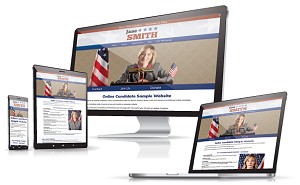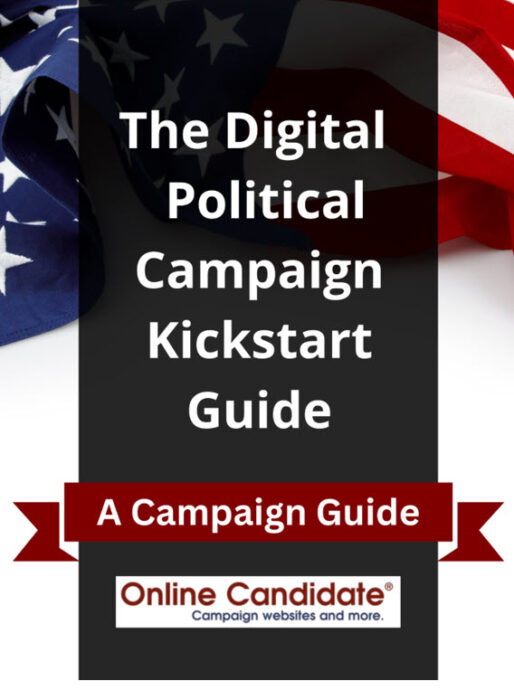Not everyone donates to your political campaign the first time you ask—and that’s normal.
Many supporters will see your first fundraising email or letter and intend to donate, but they get distracted, busy, or wait for a better time. A well-timed follow-up gives them another chance to follow through.
If you think sending another message feels too aggressive, don’t. Second asks are not only common—they often perform better than your original appeal.
Below is a sample follow-up fundraising letter, along with guidance on when to use it, how to customize it, and why follow-ups work across all levels of campaigning.
Why One Ask Isn’t Enough in Political Fundraising
Most campaigns operate on tight timelines. But your supporters? They’re juggling daily life, work, and dozens of messages competing for attention.
Here’s why a follow-up is essential:
- Repetition builds awareness. Many voters need to see your message more than once before they act.
- Timing varies. Someone may not be ready to donate the first time—but might be a week later.
- Reminders increase results. Political campaigns that send follow-ups consistently see better response rates by the second and third ask.
- It reinforces professionalism. Following up shows you’re organized and serious about earning support.
Although it may feel like following up again is overkill, it’s not. It’s a standard, necessary part of a smart campaign fundraising.
Sample Follow-Up Fundraising Letter
Dear [First Name],
Last week, I reached out to ask for your support as I launch my campaign for [Office] in [Town/District]. If you’ve already made a contribution—thank you. If not, I wanted to follow up and ask again.
Every donation helps us reach more voters and build momentum. With just [X] weeks until early voting begins, now is a great time to invest in local leadership that listens and delivers.
Whether it’s $25, $100, or more—your support will make a real difference.
You can donate securely at [Campaign Website] or by mail to [Mailing Address].
Thank you for being part of this campaign and for believing in what we’re building together.
Sincerely,
[Candidate Name]
[Phone Number] | [Email Address] | [Website URL]
When to Send a Follow-Up Ask
Send your follow-up letter about 7 to 10 days after your original fundraising message. That window allows people to catch up—but keeps your campaign top of mind.
This format works well for:
- Email reminders to your supporter list
- Printed letters or postcards to previous non-responders
- Direct messages via online fundraising platforms
You can reuse much of the original content, but revise the message slightly to reflect the timing, urgency, or new campaign activity.
How to Make Your Follow-Up Letter More Effective
Sending a second message shouldn’t just repeat your first request. You want all your messaging to be timely, relevant, and strategic. So, keep these tips in mind:
- Reference the earlier message. Make it clear this is a follow-up, not a fresh solicitation.
- Include a time-sensitive hook. Tie the ask to an upcoming deadline, event, or fundraising milestone. Create some urgency.
- Keep it shorter than the first. A concise message respects the reader’s time and is more likely to be fully read.
- Thank existing donors. Include a note acknowledging those who may have already contributed. Don’t contact them as if they have never donated before. That will probably insult them.
How to Personalize Your Ask (Based on Office and Audience)
Generic messages are easy to ignore. A few thoughtful adjustments based on the type of office you’re seeking can help your follow-up letter feel more intentional—and lead to stronger results.
Local Office (City Council, School Board, Town Supervisor)
- Emphasize your connection to the community.
- Use smaller donation amounts and tie them to tangible needs (e.g., flyers, yard signs).
- Keep the tone conversational and neighborly.
Example line: “As someone who lives right here in [Town Name], your support helps keep this campaign truly local.”
State Legislature (State House, State Senate)
- Focus on the broader impact of policy decisions.
- Reference the need to scale outreach to a larger district.
- Maintain a professional tone.
Example line: “Your contribution helps us reach thousands of voters across [District Number] who deserve to hear what we stand for.”
Judicial, Clerk, or Administrative Offices
- Keep the message nonpartisan and focused on fairness, qualifications, and trust.
- Appeal to civic-minded donors rather than party loyalty.
- Avoid emotionally charged or political language.
Example line: “This campaign is about keeping our courts fair and impartial—not politics.”
County-Wide or Regional Offices (DA, Sheriff, Executive)
- Highlight how your leadership will affect public safety, services, or quality of life.
- Use more structured asks ($250, $500+) if appropriate for your region.
- Balance authority with accessibility.
Example line: “Your support directly fuels voter outreach across the county—through events, forums, and direct contact.”
First-Time Candidates
- Build credibility through momentum, endorsements, or grassroots support.
- Emphasize the value of fresh leadership and the opportunity for change.
- Ask confidently, but stay relatable.
Example line: “I may be new to politics, but I’ve spent years working for this community, and I’m ready to take that service to the next level.”
Final Thoughts
It takes more than one message to win over voters—and the same applies to donors.
Some supporters need a reminder. Others just need better timing. Either way, a second ask often leads to your next round of contributions.
Follow up with purpose. Be clear, respectful, and direct. That’s the way you’ll raise more support from the people who already want to help you win.
Online Candidate offers multiple website packages to help you launch fast and look professional. Find out which one fits your campaign.
« Sample High-Dollar Donor Fundraising Letter (With Tips to Personalize Your Ask)
Are You Ready for a Political Campaign? Take the Survey and Find Out! »
Tags: political campaign letters







